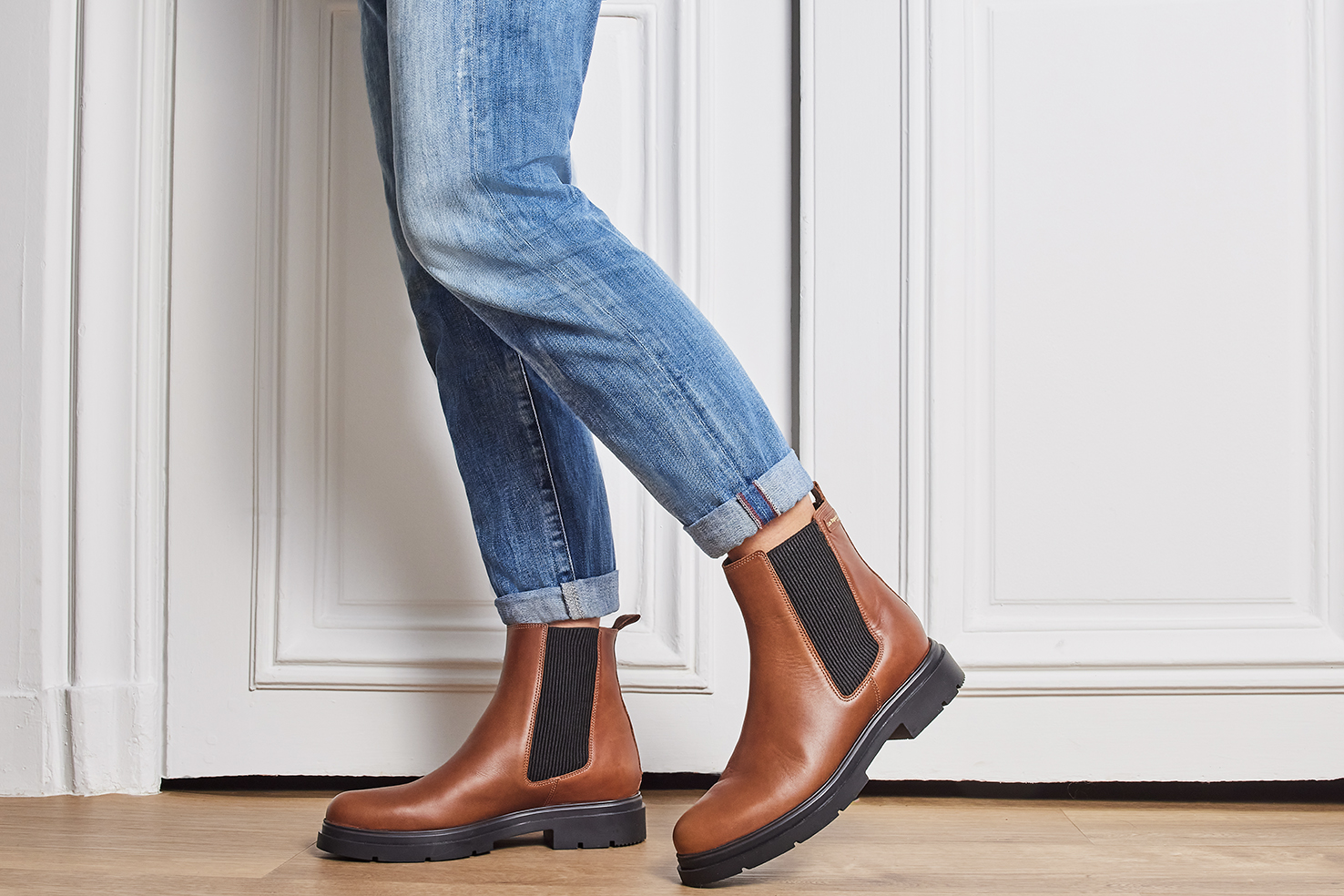How do you shine your shoes like a professional?

Waxing creates a barrier against moisture, dust and external aggression, while nourishing the leather and keeping it supple. Here are our secrets for polishing your Les Tropéziennes par M.Belarbi boots and sandals. By following this guide, you'll be able to keep your shoes in excellent condition, preserving their beauty and functionality over the long term.
What materials can be waxed?
Most smooth and patent leather shoes can be polished. However, materials such as suede or nubuck leather require special care and should not be treated with traditional shoe polishes, but with sprays or dedicated products that respect their texture and matt finish.
What makes a good shoe polish?
Beeswax or vegetable wax
Beeswax
Beeswax is a natural wax substance produced by bees. It is highly prized in the manufacture of shoe polishes for its ability to create a protective barrier on leather. This barrier not only nourishes and moisturises the leather, but also repels water and dirt, prolonging the durability of the material. In addition, beeswax provides a natural shine without clogging the pores of the leather, which is essential for maintaining the breathability and suppleness of the material.
Vegetable waxes (carnauba or candelilla)
Vegetable waxes such as carnauba or candelilla are derived from plants. Carnauba wax, extracted from the leaves of the carnauba palm, is particularly resistant to water and produces a shiny finish that is harder and shinier than that obtained with beeswax. It is often used in high-end shoe polishes for its durability and ability to produce a high shine. Candelilla wax, similar to carnauba but slightly softer, also offers good resistance to humidity and is appreciated for its ability to polish and protect without leaving a greasy residue.
Solvents of mineral or vegetable origin
Solvents play a crucial role in the formulation of shoe polishes, helping to dissolve waxes and oils for easier application. They also facilitate the penetration of these nourishing substances into the leather.
Mineral solvents
Mineral solvents, such as turpentine, are traditionally used for their effectiveness in dissolving and evenly distributing waxes and oils. They evaporate quickly, allowing the polish to dry without leaving a greasy film. However, they can be odorous and less environmentally friendly.
Vegetable solvents
Plant-based solvents, such as those derived from citrus fruit or coconut, are more environmentally-friendly alternatives. They are often less aggressive and have the added advantage of being less toxic and having a more pleasant odour. These solvents are effective in ensuring even distribution of the components in the shoe polish, while being gentler on the leather and the user.
Pigments
Pigments are added to shoe polishes to colour the leather, camouflage scratches and wear, and restore the original shine of the shoes. They must be finely ground and well dispersed in the formulation to ensure even colouring without clogging the pores of the leather.
Natural vs. synthetic pigments
Natural pigments, such as iron oxides or coal, are often used for their rich colour and low environmental impact. Synthetic pigments offer a wider range of colours and greater shade uniformity, which can be crucial for specific applications where colour matching is essential.
Other additives (softening agents or waterproofing agents)
Softening agents
Oils and fats are frequently added to shoe polish as softening agents. They help keep leather supple by preventing it from drying out and cracking. Mink oil, lanolin oil or even certain vegetable oils are commonly used for their nourishing properties.
Waterproofing agents
Silicones or fluorinated polymers are added to increase the water resistance of the leather surface. These compounds form a thin but effective protective layer that prevents water penetration while allowing the leather to breathe, which is essential to prevent mould growth and deterioration of the leather.
The essential shoe shine kit
Shoe brush
To remove dust and prepare the leather before applying shoe polish.
Soft cloths
Used to apply and polish shoe polish, they must be clean and supple.
Leather cleaner
Essential for removing residues and dirt before waxing.
Shoe polish
Choose a shoe polish to match the colour and type of leather in your shoes.
How to polish shoes
1. Préparation
Dust your shoes with the brush to remove any surface dirt.
2. Shine and clean
Use a soft cloth soaked in leather cleaner to thoroughly clean your shoes.
3. Conditioning
Apply a thin layer of conditioning cream to nourish the leather.
4. Shoe polish
Using another soft cloth, apply the shoe polish in circular movements to cover the entire surface.
5. Additional polishing
Wait a few minutes for the polish to dry, then buff with a soft bristle brush to give a shiny finish.
6. Final waxing
For special occasions, repeat the operation for a flawless finish.
FAQ about shoe polish
Should new shoes be polished?
Yes, it protects them from the elements from the outset and prolongs their durability.
Does waxing protect shoes?
Absolutely, it waterproofs them and protects them from everyday damage.
Can suede or nubuck leather shoes be polished?
No, these materials require special products such as waterproofing sprays.
How do I shine shoes without a brush?
Use a soft cloth to apply and polish the shoe polish, although a brush is preferable for best results.
How often should I polish my shoes?
It depends on use, but generally once a month for regular use.
How can I shine my shoes without polish?
In an emergency, a little leather oil or even a colourless moisturiser can do the trick temporarily.
Traps to avoid
Avoid ‘miracle grandmother recipes
These methods can damage the leather and leave residues that are difficult to remove.
Avoid white stone
This product is too abrasive for delicate shoe leather.
Avoid unknown chemicals
They can alter the colour and texture of the leather.
Avoid aggressive methods
Using 90-degree alcohol or ammonia can severely damage leather.

.svg)
.svg)
.svg)
.svg)